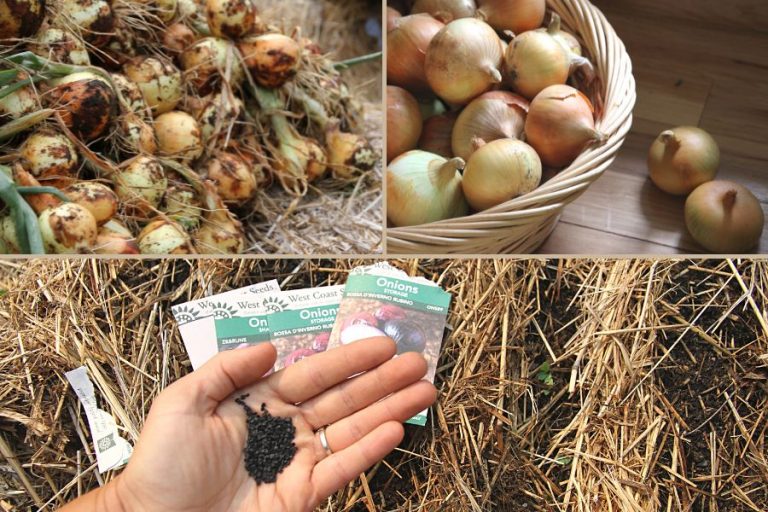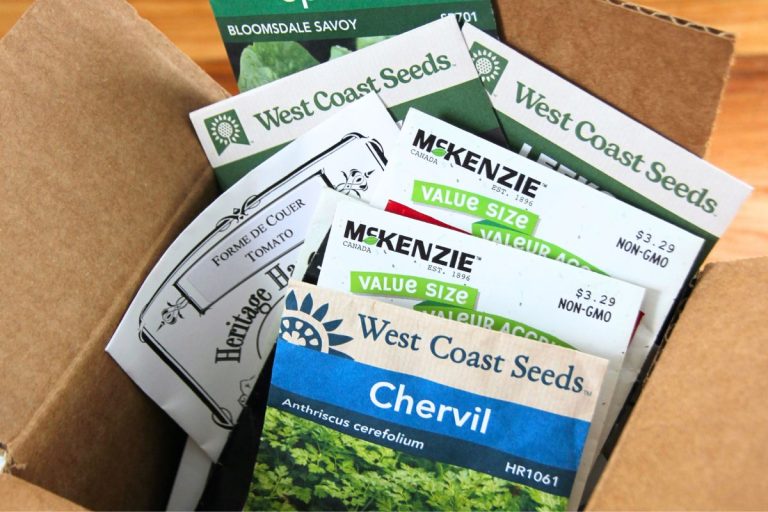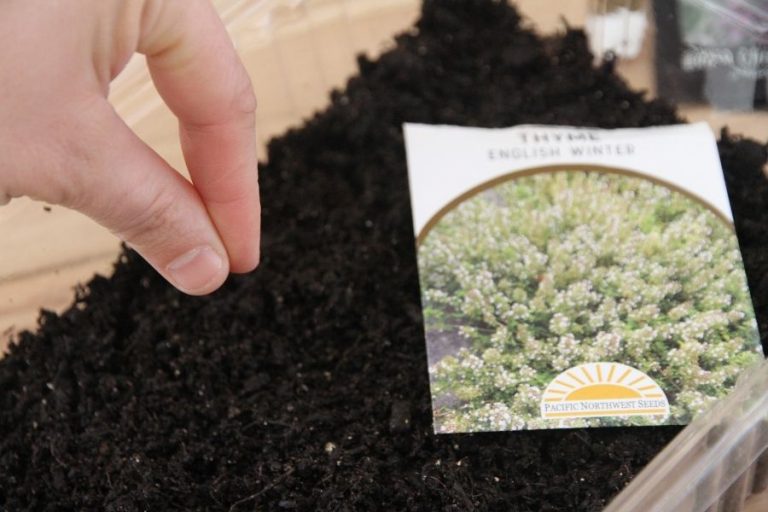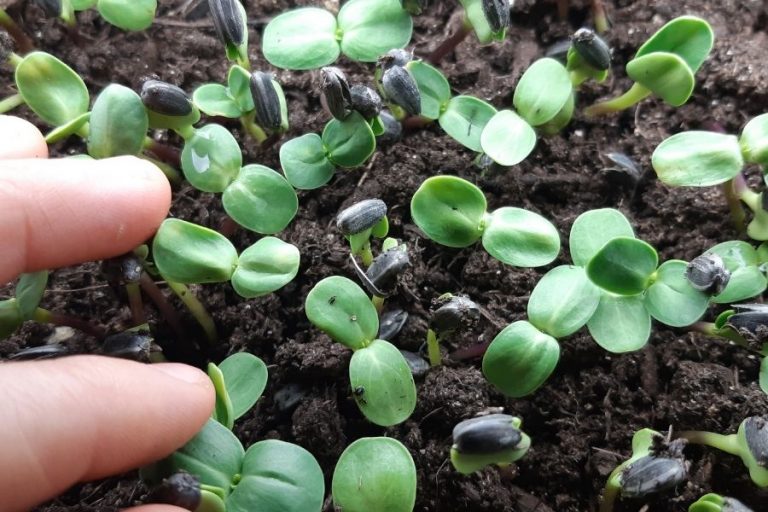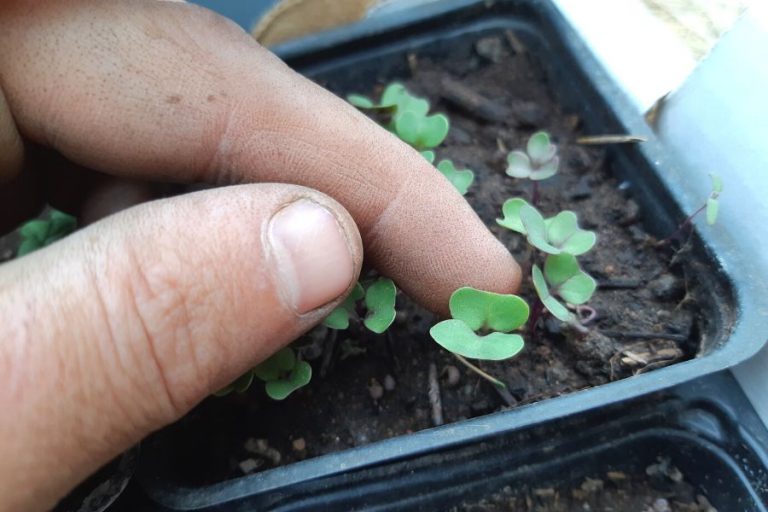Understand Garden Seeds: Heirloom, Hybrid, Organic & more!
When buying garden seed, have you ever wondered what the difference was between hybrid or heirloom, open pollinated, organic, or even non-gmo seed? Does it even matter?
Let me walk you through why each of these seed types exist, and why they might matter to you as a gardener!
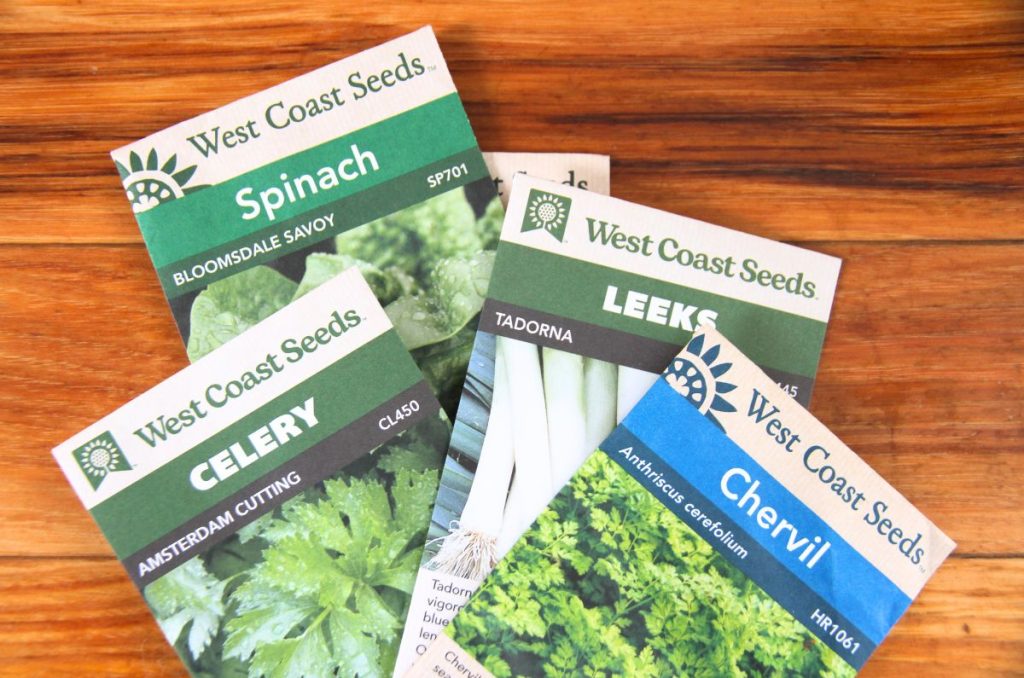
I grew up gardening in a warm, coastal climate.
Even as a little girl, I remember being excited when seed catalogues would arrive in the mail. I would pour over them, reading each seed description, wishing we could grow all the things.
At that time, I didn't notice hybrid, heirloom or organic labels.
There was a lull in my gardening experience during early adult years, but the year I was married, I started gardening again.
I was naive enough to think that F1 or F2 labels on a seed package meant the seeds were genetically modified, or tainted in some way.
Funny, I know!
But there are a lot of new gardeners out there, or even old hands like myself who just never learned what these things mean.
Let me walk you through the different types of seeds you'll find today when planning your vegetable garden!
Why Are There So Many Seed Labels?
Like so many things in life, seeds used to be simple.
Prior to the world wars, you had heirloom seeds, open-pollinated seeds and some hybrids (crossing of two plant varieties in the same vegetable, herb, flower or fruit family).
After the world wars, synthetic fertilizers became widely available (for non-organic gardening). Companies started treating their seed with chemicals to deter pests. In more recent years, labs have begun experimenting with genetically modified seeds.
It's because of these new developments that we have so many seed labels.
The average home gardener might not care about these differentiations. But it does matter to gardeners who may want a hybrid plant for a hardier strain, an all-organic garden, or to save their own seed.
Where to Find Seed Labels
Not all seeds are labeled. But due to rising interest in organic gardening and heirloom seeds, companies are being more specific on seed types.

If you're buying via a seed catalog or website, you can usually find the type of seed in the description.
When you're buying seed packets from a local garden center, grocery store or hardware center, you can usually find specifics on individual seed packets.
What Are the Different Seed Labels?
Unfortunately, seed companies have different abbreviations or even symbols for their seed types.
Many catalogs will have a legend (it's usually in the front) that will break their system down for you.
Commonly used symbols are:
- F1 (hybrid): varieties that are highly disease resistant, but won't reproduce seed true to type
- F2 (2nd generation hybrids): created by breeding two F1 hybrids together and saving the seed
- Heirloom or heritage (not usually abbreviated): seed from plants that have been reproducing true to type for decades
- O or OG (organic): parent plants were grown in certified organic conditions, so their seed is also organic.
- OP (open pollinated): these plants aren't necessarily heirlooms, but they do reproduce true to type
- Non-GMO or Non-GEO: genetically modified or engineered seeds aren't sold by garden seed companies, but they may throw the label out there just to reassure gardeners.
- Untreated: some seeds are coated with chemicals to protect them from fungi, bugs and rodents, but most are untreated.
Certified Organic Seeds (O or OG)
Have you ever flipped through a seed catalog and noticed some varieties of vegetable are "organic," while other are missing this label?
Organic simply means the parent plant that your seed came from was grown in certified organic growing conditions, with no synthetic fertilizers, pesticides or non-organic sprays.
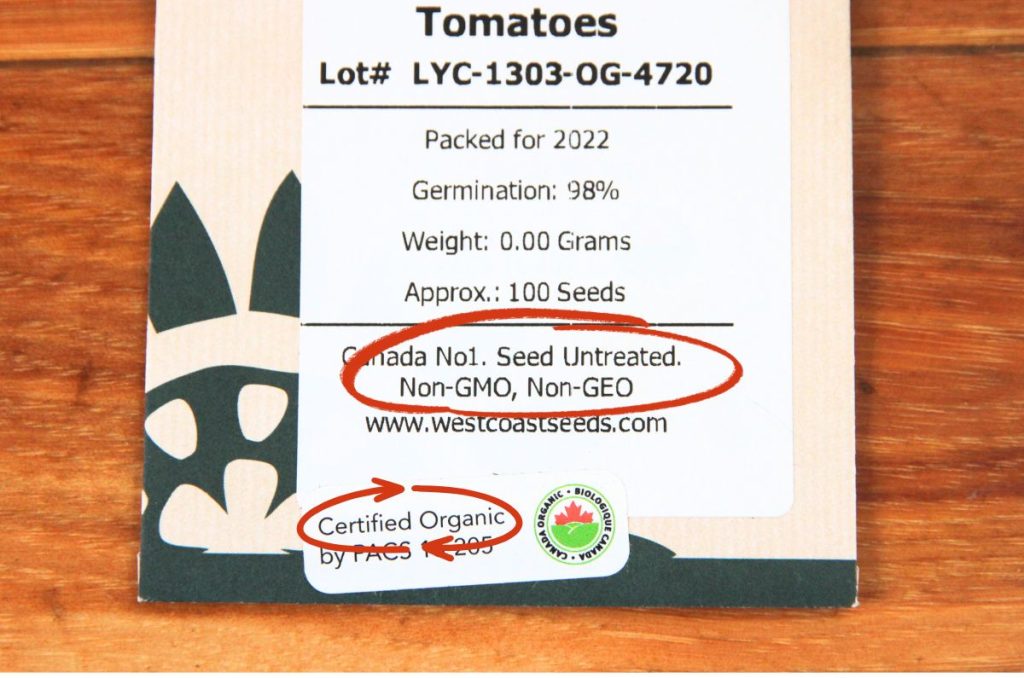
Some vegetable gardeners only want to grow organic crops. If that's you, keep your eyes open for the label in seed catalogs and check to also check to see if the seed company has organic certification before buying.
Heirloom Seed (aka Heritage)
Heirloom varieties (also know as heritage seeds) are the parents of all garden seeds.
This type of seed used to be the only option home gardeners or organic farmers had.

Nearly every heirloom variety is a story behind it, and there are entire companies dedicated to selling seeds for heirloom vegetables, herbs and flowers.
The wonderful thing about heirloom plants is that they produce seed true to type.
Heirlooms are the #1 choice for seed savers, who wish to be independent and save seed from their own garden.
Hybrid Seeds (F1 or F2)
A hybrid is created when plants within the same family cross pollinate, due to human intervention, wind, bugs or bees.
Unintentional cross pollination is actually where a lot of our heirloom strains came from.
Longer ago, families didn't have access to seed companies and everyone saved their own. So even if their beans, cucumbers or carrots cross pollinated, they would continue to save and replant that seed.
After generations of replanting, the strain would eventually stabilize and become a "new" variety within its family.
Today plant breeders intentionally cross two varieties in the same family for disease resistance, plant hardiness or a higher yielding crop.
While hybrid plants often have more desirable traits than their parent plants, seed from hybrids won't reproduce true to type.
In seed catalogs, hybrids are often marked with F1 (generation 1 hybrid). These are usually the hardiest strains.
But you do sometimes get seeds marked with an F2 (the seeds were saved from the F1 hybrid). Neither will reproduce true to type if you save the seed and replant it.
Open-Pollinated Seeds (OP)
Open pollination simply means that a plant's flowers have been naturally pollinated through the wind, bees, bugs or human hands. Like heirlooms, seed from open-pollinated varieties will reproduce true to type.

It is worth noting that all heirlooms are open-pollinated, but not all open-pollinated plants are classified as heirlooms!
Non-GMO & GEO Seeds (Non-gmo or non-geo)
Genetically modified seeds (aka genetically modified organisms) and genetically engineered organisms are created in a lab, and have altered DNA with sources that aren't necessarily plant based.
I avoid using genetically modified foods in my kitchen. So when it comes to garden seed, its only natural that I would want to buy non-gmo seed!
Or so it would seem at first glance. But here's the thing with GMO labels in your garden seed catalog.
At this time, it's illegal to sell GMO seed to backyard gardeners. This is true in both Canada and the United States.
Commercial farmers are the only ones who have access to GMO seed.
So while companies selling garden seeds might highlight the fact that their seeds are non-gmo, its no brainer.
The only thing I would pay attention to in this respect is if you start to see a GMO label.
Otherwise, you don't need to worry!
In Conclusion
The average home gardener doesn't need to worry about these seed labels.
Buy, grow and enjoy!
But if you are concerned about having an all-organic garden, or if you want to learn how to save your own seed, it's worth learning what these different title mean.
Personally, I really enjoy growing heirloom seed, both to preserve the strains and have the option of putting my own seed away if I so desire!
